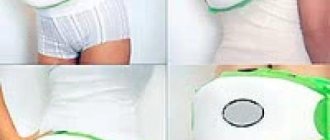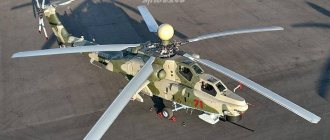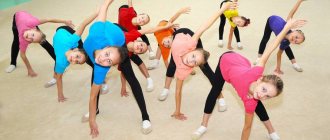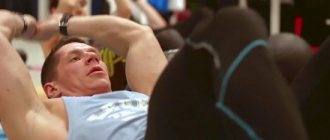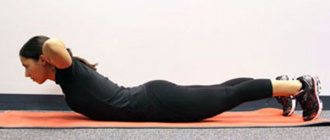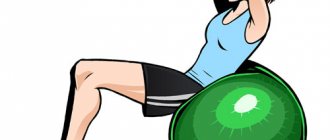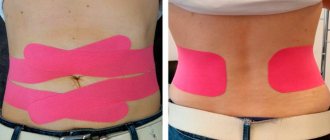Leg raises on parallel bars cannot be called a simple exercise; it involves not only the abdominal muscles, but also involves grouping the stabilizer muscles to keep the body in an upright position. Its simplified version is a lying leg raise while lying on the floor, and a more complicated version is a hanging leg raise. Both options are aimed at developing the press, but let's focus on the parallel bars technique and get acquainted with the main advantages and disadvantages of this exercise.
Advantages and disadvantages of standing leg raises
Let's start with the advantages:
- Uniform load on muscles. The parallel bars, or rather the vertical position of the body, allows you to work the rectus abdominis muscle, involving in the work the lower part of the rectus muscle, which is least involved in straight crunches on the floor.
- Burns more calories. Compared to exercises on the floor, lifting on parallel bars is a more energy-consuming exercise, as it requires additional fixation of the body in the simulator, due to which the muscles of the shoulder girdle are involved in the static load.
- The presence of a support allows you to eliminate body swaying, for example, as when hanging on a bar, which makes the exercise technique clearer and more concentrated.
Disadvantages of the exercise:
- Quite a difficult exercise that requires good position stabilization . When the elbows and lower back are supported, the load on the shoulder girdle is not reduced. If the shoulder and chest muscles are untrained, there is a high probability that the neck will sag under the shoulders, which will additionally overload the trapezius muscle and the sternocleidomastoid muscle of the neck, which will also make breathing difficult.
- Weak abdominal muscles will also not cope with the load , despite the fact that the exercise is intended to strengthen them. In addition to dynamic lifts, the abdominal muscles are also responsible for stabilizing the body in the machine, controlling the fit of the lower back to the back of the machine and are in constant tension, which cannot be interrupted during the approach. Let's return to this point in technology. Therefore, you should start doing leg raises on the uneven bars only after mastering the option lying on the floor.
Exercises on parallel bars: safety precautions
Such training is not suitable for those who have joint problems (particularly wrists). “Also, exercises on parallel bars are contraindicated for people with a sore lower back - this area receives a noticeable load here,” adds Denis Savchenko.
For safe training, it is important to monitor the technique of performing the exercise: try to always work on the uneven bars with your knees bent. This helps relieve stress on the lower back. Concentration is also important: try to work with the abdominal muscles, and not the leg muscles (they can “take” the load onto themselves if the abdominal muscles are not developed enough).
We asked Denis Savchenko to compose and show us a set of exercises for the press on uneven bars.
What muscles work when lifting legs on parallel bars?
Main muscles:
- Rectus abdominis muscle.
- External oblique abdominal muscles.
- The rectus femoris and iliopsoas muscles are involved in bringing the legs toward the body.
Muscles involved in position stabilization:
- Sternocleidomastoid muscle.
- Deltoid.
- Pectoralis major muscle.
- Biceps brachii muscle.
- Triceps brachii muscle.
#1 The pelvis does not come off the back of the machine
From a biomechanical point of view, the main function of the abdominal muscles is to bring the pelvis to the chest. This means that to work out the abs you need to move your hips towards the chest. This range of motion is possible if your pelvis moves forward upward, lifting off the back of the machine. Otherwise, the abdominal muscles will minimally participate in the exercise, and the hip flexors will take the main load.
Solution: lift your pelvis from the back and move it slightly forward and upward, so that with the maximum contraction of the press, your fifth point can be seen by an observer from the side. Try to keep your hips moving towards your chest.
Straight leg raise technique in the simulator
- Stand on the special leg bars to get into the correct starting position.
- Place your forearms on the special supports and grab the hand grips.
- Press your spine against the back of the machine. Be especially careful that your lower back does not come off the machine. To do this, you need to tense the rectus abdominis muscle and not relax during the approach.
- Lower your legs straight down, keeping them together.
- Exhale and raise your legs until they are parallel to the floor without bending your knees. Work exclusively with your abdominal muscles, do not compensate for the load with the shoulder girdle.
- Keep your neck extended, do not “hide” your head under your shoulders.
- As you inhale, slowly lower your legs down, but do not lift your lower back from the machine. At the lowest point, do not relax your abs.
Execution technique
Initial position:
- Grasp the handles with your hands,
- Stand on your elbows, placing your forearms on the pads of your handles.
- Lean your back completely against the support of the machine.
- Keep your legs hanging in front of you.
Movement:
- Inhale and, holding your breath, powerfully lift your straight legs up (maintain a slight angle at the knees) and at the same time lift your pelvis.
- Exhale and pause for 1-2 seconds at the top of the movement.
- Slowly and under control, lower your legs down to the starting position.
- Without relaxing your abdominal muscles, move on to the next repetition.
- Complete the planned amount of work and complete the approach.
Attention!
- Avoid swinging your legs, consciously or unconsciously. Of course, in this case the lifting will be easier, but the load on the abdominal muscles will be proportionally reduced.
- Keep your knees at a small, fixed angle for the rest of the set to better isolate your abdominal muscles and prevent the load from shifting to your back.
- Do not lower your legs down to a vertical position to keep your muscles constantly tense.
- Do not “fall” down when returning to the starting position. This contributes to the “premature” shutdown of the abdominal muscles, that is, they do not receive the full load assigned to them.
Recommendations!
- Try to lift your pelvis towards your sternum, lifting it away from the support of the machine. Only in this case is maximum contraction of the abdominal muscles possible.
- Perform leg raises above the horizontal, which will put more stress on the abdominal muscles.
- Don't relax your abs between reps to increase the intensity of your workout.
- Rigidly fix the shoulder girdle when taking the starting position to prevent injury to the shoulder joint.
- Pull the sock towards you to better concentrate on the moment of “twisting”.
Execution options!
We recommend reading: Is it possible to gain muscle mass at home?
| Raising the knees while resting on the elbows. According to the main points of the technique, the exercise repeats the mechanics of the basic movement - the legs bent at the knees should be “pulled” to the chest, pushing the pelvis up. However, the load on the press in this version of the lifts will be significantly reduced due to the reduction in the length of the “counterweight”. The variation is often used by athletes with low physical fitness. |
| Lateral leg raises in support. You can shift the emphasis of the load to the oblique abdominal muscles by turning your legs slightly to the side. |
| Leg raises supported by parallel bars. In this case, the emphasis is on the hands. It is important to keep your body upright during lifts and not lean forward. The version of leg raises on parallel bars is more difficult, since in this case there is no back support and the athlete needs to make additional effort to stabilize the body. Plus, the arm muscles themselves must have sufficient strength, which actually takes on the weight of the athlete’s body. |
Raising bent legs in support on parallel bars
Despite the fact that this is a simpler option, since the load on the rectus abdominis muscle is reduced by bending the legs, it also has its own technical nuances and features.
- The starting position is completely repeated.
- Straight legs below are together.
- Next, exhale, lift your legs up, bending your knees to a right angle, bring them to your chest, but do not tear your lower back from the back.
- That is, in the upper position of the knees, the back remains completely pressed against the machine, despite the design of the machine - vertical or inclined.
- As you inhale, slowly lower your knees, gradually straightening them, but, be careful , do not fully straighten them at the lowest point, maintaining tension in your abdominal muscles and the position of your lower back. Thus, the legs should not be strictly vertical with the body.
How to increase the effectiveness of the exercise
To ensure that your abdominal muscle training brings maximum results, adhere to the following rules:
- The pace of the exercise is slow and controlled
Raising your legs up takes about a second. In the upper phase of the movement, the legs are also fixed for a second, and the abdominal muscles are further tensed. It is better to lower your legs down for two seconds.
- Don't put your feet down all the way
It is better not to lower your legs until they are perpendicular to the floor, since in this position the abs relax.
The key to effectiveness is constant muscle tension, so at the lowest point always leave your legs slightly ahead of your body.
- Control your abdominal tension
This is related to the point above, but adds another point.
To reduce the assistance of the iliopsoas muscles, tighten your abdominal muscles in the starting position, starting to lift your legs by activating your abs.
Don't concentrate on bending your legs, otherwise you will feel only the work of your hips in this exercise.
By doing it slowly, it is easier to control the constant tension both on the up and down strokes.
It is this technique of execution that helps to maximize the load on the rectus abdominis muscle and minimize the participation of the iliopsoas muscles and hip flexors.
Recommendations for implementing leg raises in the abdominal machine
Start mastering the exercise in the range of 15-20 repetitions for 3 sets. If it turns out less, it’s not scary. The main thing is to do it right. As soon as the neck and chest begin to sag, although there is still enough strength in the abdominal muscles, complete the approach. Then it is better to do the exercise while lying down.
For those who find it easy to perform more than 25-30 repetitions, it is recommended to use weighted leg cuffs or hold a medicine ball with your feet. Thus, the number of repetitions can be reduced to 15 and performed in 3-4 sets. The main thing is to feel a burning sensation in the abdominal muscles by the end of the approach.
Performing abdominal exercises while lying down
Sometimes this exercise is performed differently. Lying leg raises can be performed both at home and in the gym, as it does not require special equipment.
When performing this workout, you need to choose the right surface. It shouldn't be too hard, but it shouldn't be too soft either. It is best to take a very ordinary mat and lay it on a flat floor (the floor must be flat, otherwise the exercise will become uncomfortable for you or you risk getting a sprain if any part of your body suddenly hits a hard surface). This exercise can be performed both on the back and on the stomach. A certain method is convenient for everyone, but you can do both alternately.
Exercises on the horizontal bar and uneven bars
To engage the lower abs, straight leg raises are suitable. In order for the load to fall more on the upper part, you need to perform twists from a hanging position upside down. Don’t forget about the oblique muscles, which are perfectly pumped when turning.
The main advantage of using these exercises is that the body does not have a fulcrum as it does not come into contact with surfaces. In this position, the entire load falls on the muscles, thereby increasing efficiency.
Improved abdominal exercise
Side bends with dumbbells
- 3 sets of 10 reps
- Body part: Press Equipment: Dumbbells
Pulling your legs to your chest on a horizontal bench
- 3 sets of 15 reps
- Body part: Press Equipment: Body weight
Hanging Knee Raises
- 3 sets of 30 seconds
- Body Part: Press Equipment: No
Quadriceps stretch while kneeling
- 3 sets of 30 seconds
- Body part: Quadriceps Equipment: Body weight
Squats without weights
- 5 minutes max reps
- Body part: Quadriceps Equipment: Body weight
Add to Calendar * Add to My Workouts * Print Workout
* — The service is in beta testing
Adapt it to your conditions as necessary.
